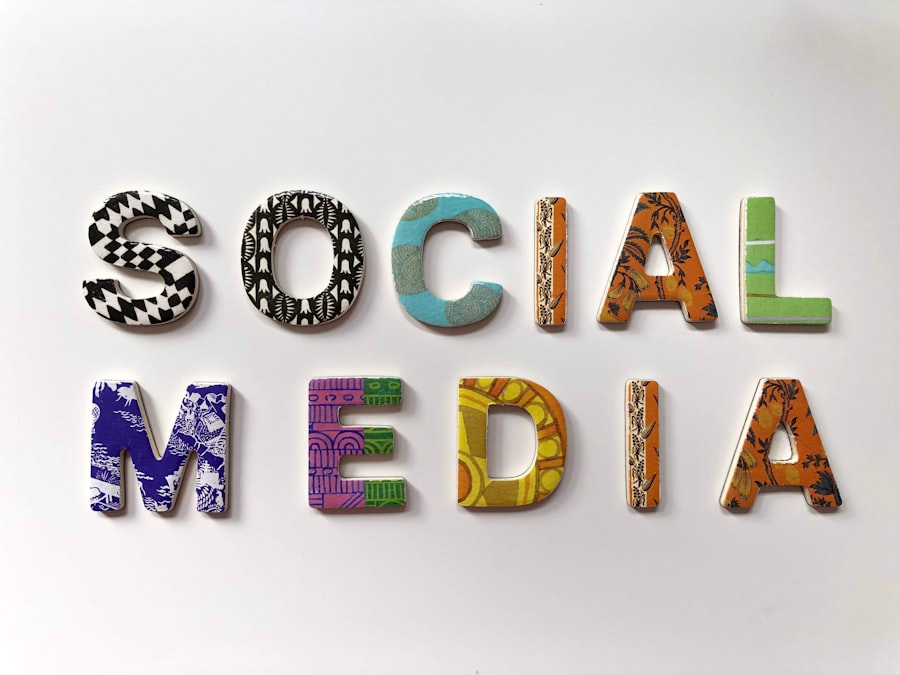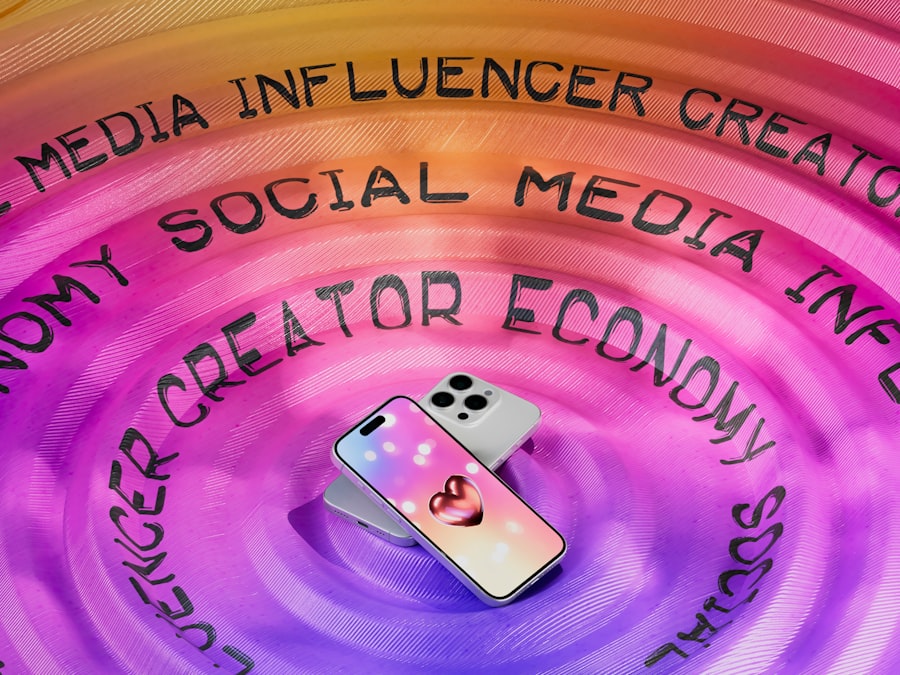Social media has transformed the landscape of communication across various sectors, and healthcare is no exception. Platforms such as Facebook, Twitter, Instagram, and LinkedIn have emerged as vital tools for healthcare professionals, organizations, and patients alike. The ability to share information rapidly and engage with a broad audience has made social media an indispensable asset in the healthcare industry.
For instance, during public health crises like the COVID-19 pandemic, social media served as a primary channel for disseminating critical information about safety protocols, vaccination updates, and health guidelines. This rapid dissemination of information not only kept the public informed but also fostered a sense of community and support among individuals navigating the uncertainties of a global health crisis. Moreover, social media’s interactive nature allows for real-time communication between healthcare providers and patients.
This two-way communication fosters a more personalized approach to healthcare, where patients can ask questions, share experiences, and receive immediate feedback. For example, a hospital might use its social media channels to host live Q&A sessions with medical experts, allowing patients to engage directly with professionals about their health concerns. This level of engagement not only enhances patient education but also empowers individuals to take an active role in their health management.
As healthcare continues to evolve, the power of social media will likely play an increasingly pivotal role in shaping patient experiences and outcomes.
Key Takeaways
- Social media enhances patient engagement and communication in healthcare.
- Building trust through transparent and credible social media content is crucial.
- Targeted marketing helps reach specific patient groups effectively.
- Influencer marketing can amplify healthcare messages and increase awareness.
- Integrating social media with telemedicine and digital health platforms shapes the future of healthcare marketing.
Leveraging Social Media for Patient Engagement
Patient engagement is a critical component of effective healthcare delivery, and social media provides unique opportunities to enhance this engagement. By utilizing platforms that patients are already familiar with, healthcare providers can create a more accessible environment for communication. For instance, a clinic might establish a Facebook group where patients can share their experiences, ask questions, and receive support from both peers and healthcare professionals.
This not only builds a sense of community but also encourages patients to be more proactive about their health. Additionally, social media can be used to share educational content that resonates with patients. Infographics, videos, and live streams can simplify complex medical information, making it easier for patients to understand their conditions and treatment options.
For example, a hospital could create short video clips explaining common procedures or showcasing patient success stories. By presenting information in an engaging format, healthcare providers can capture the attention of their audience and motivate them to participate in their own care actively. This approach not only enhances patient knowledge but also fosters a culture of shared decision-making between patients and providers.
Building Trust and Credibility through Social Media

Trust is a cornerstone of the patient-provider relationship, and social media can be instrumental in establishing and maintaining that trust. Healthcare organizations that consistently provide accurate, reliable information on their social media channels are more likely to be viewed as credible sources by patients. For instance, a medical practice that regularly shares evidence-based health tips and responds promptly to patient inquiries demonstrates its commitment to transparency and patient education.
This proactive approach can significantly enhance the organization’s reputation within the community. Furthermore, showcasing real patient testimonials and success stories on social media can further bolster credibility. When potential patients see authentic experiences shared by others who have benefited from a particular treatment or service, they are more likely to trust the provider.
For example, a cancer treatment center might share video testimonials from survivors discussing their journey and the support they received from the staff. Such narratives not only humanize the healthcare experience but also create an emotional connection that can influence prospective patients’ decisions.
Targeted Marketing and Outreach to Specific Patient Populations
| Metric | Description | Example Value | Measurement Frequency |
|---|---|---|---|
| Patient Demographic Reach | Number of patients in targeted demographics reached through marketing efforts | 5,000 patients | Monthly |
| Engagement Rate | Percentage of targeted patients who interact with outreach materials (clicks, calls, sign-ups) | 12% | Monthly |
| Conversion Rate | Percentage of engaged patients who schedule appointments or enroll in programs | 8% | Monthly |
| Cost per Acquisition | Average cost to acquire one patient from targeted marketing efforts | 45 | Quarterly |
| Patient Retention Rate | Percentage of targeted patients who continue care or follow-up after initial contact | 75% | Quarterly |
| Channel Effectiveness | Performance of different outreach channels (email, social media, direct mail) in reaching target populations | Email: 15%, Social Media: 10%, Direct Mail: 7% | Monthly |
| Patient Satisfaction Score | Average satisfaction rating from patients acquired through targeted outreach | 4.3 / 5 | Bi-Annual |
One of the most significant advantages of social media in healthcare marketing is the ability to target specific patient populations effectively. By leveraging demographic data and user interests available on platforms like Facebook and Instagram, healthcare organizations can tailor their marketing efforts to reach individuals who are most likely to benefit from their services. For instance, a fertility clinic might create targeted ads aimed at women aged 25-40 who have shown interest in family planning or reproductive health topics.
This level of precision ensures that marketing resources are utilized efficiently while maximizing outreach efforts. Moreover, social media allows for hyper-local marketing strategies that can engage communities directly. A local health department might use social media to promote vaccination drives or health fairs specifically tailored to underserved populations within its jurisdiction.
By using geotargeting features available on platforms like Twitter or Facebook, organizations can ensure that their messages reach those who need them most. This targeted approach not only increases participation rates but also fosters a sense of community involvement in public health initiatives.
Harnessing the Potential of Influencer Marketing in Healthcare
Influencer marketing has gained traction across various industries, including healthcare. Collaborating with influencers—individuals who have established credibility and a following within specific niches—can amplify healthcare messages and reach broader audiences. For example, a nutritionist might partner with a popular fitness influencer to promote healthy eating habits among their followers.
This collaboration not only lends credibility to the nutritionist’s message but also introduces it to an audience that may not have been previously aware of the importance of nutrition in overall health. Additionally, healthcare organizations can leverage micro-influencers—individuals with smaller but highly engaged followings—who often have a more authentic connection with their audience. A local hospital might collaborate with community leaders or health advocates who have built trust within specific demographics.
These partnerships can help disseminate important health information while fostering community engagement. By tapping into the existing relationships that influencers have cultivated with their followers, healthcare organizations can effectively extend their reach and impact.
Utilizing Social Media Listening and Analytics for Healthcare Insights

Social media listening involves monitoring online conversations about specific topics or brands to gain insights into public sentiment and trends. In healthcare, this practice can provide valuable information about patient needs, preferences, and concerns. By analyzing discussions surrounding particular health issues or treatments, organizations can identify gaps in knowledge or areas where patients may require additional support.
For instance, if a significant number of patients express confusion about a new medication on social media platforms, a healthcare provider can respond by creating educational content that addresses these concerns. Analytics tools available on social media platforms allow healthcare organizations to track engagement metrics such as likes, shares, comments, and click-through rates. These insights can inform future content strategies by highlighting what resonates most with audiences.
For example, if a hospital notices that posts featuring patient success stories receive higher engagement than standard informational posts, it may choose to focus more on storytelling in its future communications. By leveraging data-driven insights from social media analytics, healthcare organizations can refine their messaging and better meet the needs of their patients.
Overcoming Challenges and Risks in Social Media Marketing for Healthcare
While social media offers numerous benefits for healthcare marketing, it also presents challenges and risks that organizations must navigate carefully. One significant concern is the potential for misinformation to spread rapidly on these platforms. Inaccurate health information can lead to confusion and mistrust among patients.
To combat this issue, healthcare organizations must prioritize transparency and accuracy in their communications. Establishing clear guidelines for content creation and ensuring that all shared information is evidence-based can help mitigate the risk of misinformation. Another challenge is maintaining patient privacy and confidentiality in online interactions.
The Health Insurance Portability and Accountability Act (HIPAA) imposes strict regulations on how patient information can be shared. Healthcare organizations must ensure that they do not inadvertently disclose sensitive information through social media interactions or posts. Training staff on best practices for social media use and implementing robust policies regarding patient privacy can help organizations navigate these complexities while still engaging effectively with their audience.
The Future of Healthcare Marketing: Integrating Social Media with Telemedicine and Digital Health Platforms
As technology continues to advance, the integration of social media with telemedicine and digital health platforms is poised to reshape healthcare marketing strategies significantly. The rise of telehealth services has already demonstrated how digital platforms can facilitate remote consultations and improve access to care. By incorporating social media into these services, healthcare providers can enhance patient engagement before, during, and after virtual visits.
For instance, pre-visit educational content shared on social media can prepare patients for telehealth appointments by informing them about what to expect. Moreover, integrating social media with digital health applications can create seamless communication channels between patients and providers. Patients could receive reminders about upcoming appointments or follow-up care through social media platforms while also having access to educational resources tailored to their specific conditions.
This holistic approach not only streamlines communication but also fosters ongoing relationships between patients and healthcare providers beyond traditional office visits. In conclusion, as the landscape of healthcare continues to evolve with technological advancements, the role of social media will undoubtedly expand further. By embracing these changes and leveraging the power of social media effectively, healthcare organizations can enhance patient engagement, build trust, target specific populations more efficiently, and ultimately improve health outcomes across communities.



